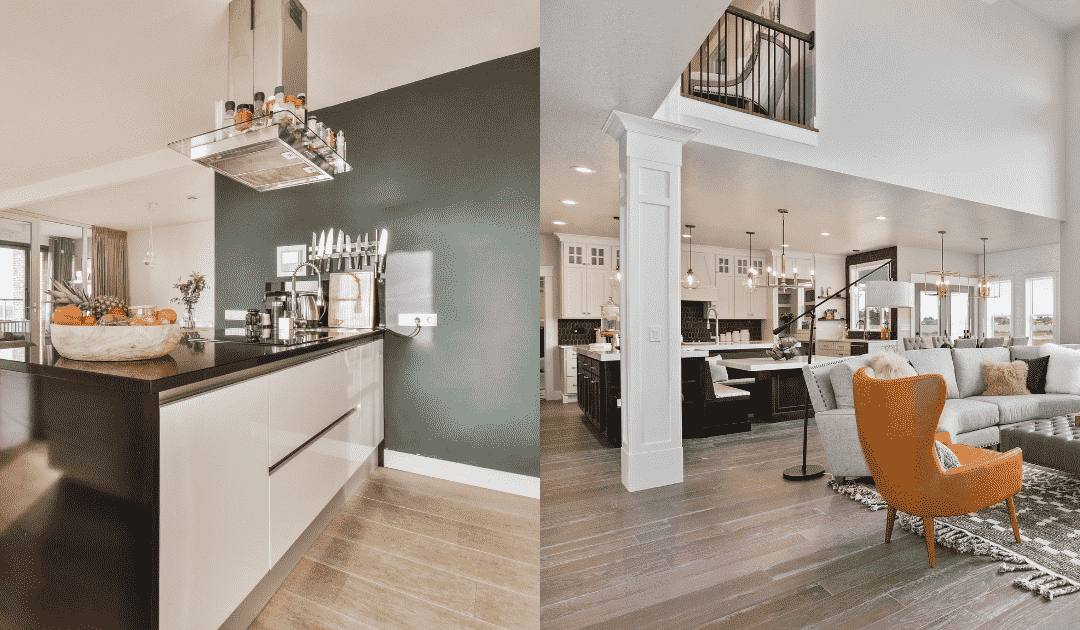Welcome to your regular staging advice column designed exclusively for real estate professionals. Whether you’re grappling with how to enhance the visual appeal of your listings or seeking innovative strategies to captivate your target audience, you’ve come to the right place. This is your opportunity to pose any and all staging-related questions and receive expert advice, for free.
No query is too big or small — if it’s about elevating the look of your real estate, we want to hear it and we want to help! Email your questions to ninadoiron@isodesign.ca
When it comes to selling a home, staging has become a crucial element in making a property more appealing to potential buyers. Home staging involves preparing a property to be shown in the best possible light, often by arranging furniture, decorating and sometimes even renovating certain aspects of the home.
However, one question that frequently arises among homeowners and real estate agents is why staging costs differ so much from one stager to another. Several factors impact staging costs, which we’ll get into below.
1. Scope of services
One of the primary reasons staging costs differ is the scope of services offered by different stagers. Some stagers provide a basic consultation where they advise on how the homeowner can arrange their own furniture and decor. This service might cost anywhere from $150 to $500, depending on the thoroughness of advice provided, the region and the stager’s experience.
On the other hand, full-service staging involves a more hands-on approach, including the stager bringing in furniture, artwork and accessories. This level of service can cost significantly more, often ranging from $2,000 to $10,000 or even more depending on the size of the home, the quality of the furnishings and accessories and the length of time the staging items are rented.
In some cases, stagers may also offer specialized services like decluttering, deep cleaning or minor repairs, which can add to the overall cost. The more comprehensive the service, the higher the fee. For instance, a stager who also handles renovations or provides high-end luxury furniture might charge significantly more than one who simply rearranges existing items or offers standard-quality furniture.
2. Experience and expertise
The experience and expertise of the stager also play a critical role in determining cost. A seasoned stager with a proven track record of helping homes sell faster and for higher prices can command higher fees. Staged homes spend significantly less time on the market compared to non-staged homes, which underscores the value of hiring an experienced stager who may charge more because of their ability to deliver results.
Just like with professionals such as accountants and lawyers, the more experience a home stager has, the higher their fees tend to be. With greater expertise comes a deeper understanding of the market, refined skills and a track record of success, all of which justify the higher cost.
Experienced stagers often have a deep understanding of buyer psychology, market trends and what appeals to specific demographics. They may also have a well-established network of vendors and resources, which can enhance the staging process. For instance, a stager with 10+ years of experience may charge upwards of $500 per hour for consultation, while a newer stager might charge closer to $200 per hour.
3. Geographical location
Location is another significant factor in the cost of staging. In high-demand real estate markets such as Toronto, other larger cities and British Columbia, staging costs are typically higher than in smaller, less competitive markets. This is partly due to the higher cost of living and partly because homes in these areas often have higher price points, which can justify a more significant investment in staging.
For example, in Toronto, full-service staging for a mid-sized home might cost anywhere from $5,000 to $10,000, while in smaller cities on the East Coast, the cost could be as low as $2,000 to $4,000. The difference in pricing can be attributed to factors like the availability of staging resources, the cost of transporting furniture and the level of demand for staging services in the area.
4. Inventory and quality of materials
The quality and type of inventory a stager uses can also influence the cost. Some stagers own a large inventory of high-end furniture, artwork and accessories, which allows them to create luxurious and highly appealing spaces. The cost of maintaining, transporting and insuring this inventory is reflected in their fees.
For example, a stager who uses luxury brands like Restoration Hardware or custom-made furniture will charge more than one who uses standard or rental-grade furnishings. The difference in cost can be substantial — luxury staging can cost 50 per cent to 100 per cent more than standard staging, especially if the home is large and requires many high-end items to appeal to high-end buyers.
We recently staged a $7 million luxury waterfront property, where each room featured expansive dimensions. To complement the scale of the space, we not only incorporated high-end, luxury furniture and accents but also sourced large-scale pieces specifically tailored to suit the grand proportions of the rooms. This ensured the staging was not only visually striking but also appropriately proportioned to the property’s grandeur.
5. Customization and client expectations
Customization is another factor that can drive up staging costs. Some clients may have specific requests or high expectations that require additional time, effort and resources. For example, a homeowner might want the staging to reflect a certain lifestyle or theme, such as a modern minimalist look or a coastal vibe. Accommodating these preferences often requires the stager to source specific items or make special arrangements, which can increase the overall cost.
Additionally, some stagers offer bespoke services, where every aspect of the staging is tailored to the client’s needs. This level of customization is typically more expensive because it involves more planning, sourcing and sometimes even custom furniture or artwork.
6. Duration of staging
The length of time the staging items remain in the home can also affect the cost. Most stagers include a certain period (typically 30 to 60 days) in their base price. If the home does not sell within that timeframe and the staging needs to be extended, additional fees will apply. These extension fees can range from a few hundred to several thousand dollars, depending on the stager and the inventory involved.
7. Insurance and liability costs
Stagers must also account for insurance and liability costs, which can vary depending on the size of the staging operation. Larger companies with more extensive inventories may have higher insurance premiums, which are passed on to the client in the form of higher fees. This includes coverage for potential damages to the home, the staging items or injuries that might occur during the staging process.
8. Overhead costs
Another critical factor that contributes to the varying costs of staging services is the difference in overhead costs between stagers who run large teams and those who operate as solopreneurs. Stagers with a large team often have higher overhead expenses, including salaries for employees, rent for office space, warehouse storage for inventory, transportation costs and insurance for both the business and the team members.
These costs add up and are typically reflected in higher fees for services. For example, a stager with a team may need to cover the costs of a dedicated logistics manager, movers and administrative staff, all of whom play essential roles in delivering a seamless staging experience.
In contrast, solopreneurs who work out of their homes have significantly lower overhead costs. They often manage all aspects of the business themselves, from client consultations to physically staging the property, which allows them to keep their prices more competitive. However, this can also mean that their capacity is limited and they may not be able to take on as many projects simultaneously as a larger team could. The trade-off between a solopreneur’s lower costs and potentially more personalized service versus a larger team’s resources and scalability is something homeowners and agents should consider when selecting a stager.
The cost of home staging can vary widely from one stager to another due to a range of factors including the scope of services, experience, geographical location, inventory quality, customization, duration and insurance and overhead costs.
When selecting a stager, homeowners and real estate agents should carefully consider what’s included in the service, the stager’s track record and how well the staging aligns with the property’s target market. While it might be tempting to choose the least expensive option, investing in a skilled stager who understands the nuances of the market can lead to faster sales and potentially higher offers, ultimately making the cost well worth it.
Got home staging questions for a future column? Submit them to ninadoiron@isodesign.ca

Award-winning Certified UltimateStager, redesigner and owner Nina Doiron is the principal at iSO Design. She provides an objective and experienced eye to attract more buyers and help sell for top dollar. She will also help you declutter and get organized. She says she will “inspire redesign ideas so that you’ll fall in love with your home again.” Call 416-993-0131.













